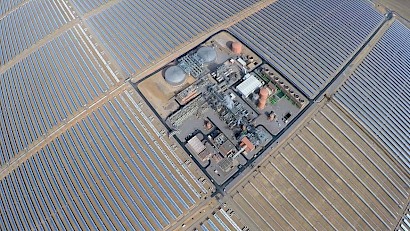Ex-Tesco CEO wants $22 Billion Power Link from Morocco to U.K.
 A former head of Tesco Plc is part of a business planning to build what would be the world’s longest power link bringing extra supplies to Britain from renewable sources in Morocco.
A former head of Tesco Plc is part of a business planning to build what would be the world’s longest power link bringing extra supplies to Britain from renewable sources in Morocco.
Xlinks on Sunday laid out plans to build the 16 billion-pound ($21.9 billion) sub-sea project that will cover a distance of 3,800 kilometers (2,360 miles). It will take power from 10.5 gigawatts of large-scale solar and wind farms in Morocco, and unlike the U.K.’s other interconnectors, would only supply Britain.
Such links are seen as vital to access power from countries with different resources and the U.K. plans to triple its interconnector capacity by 2030. The government has pointed to the need to build more renewable capacity to replace gas, which is vulnerable to prices swings on international markets, while the recent energy crunch highlighted the need for alternative supply.
“We’re approaching this as remote generation so this is solely for the U.K. energy market,” Xlinks founder and Chief Executive Officer Simon Morrish said in an interview. “It’s coming from an area which has completely different weather patterns, and is not correlated, so it provides enormous amounts of resiliency to the U.K. energy system.”
The link could supply 7 million British homes, Xlinks said. Tesco’s former CEO Dave Lewis and ACWA Power chief Paddy Padmanathan are part of the leadership team.
Xlinks’s 3.6-gigawatt project is bigger than Electricite de France SA’s Hinkley Point C nuclear reactor. The wind and solar capacity would be coupled with a 5-gigawatt battery to allow stored power to be sent to Britain when needed.
The government uses a contract-for-difference funding mechanism for renewables and big infrastructure projects. Xlinks says it’s seeking 48 pounds a megawatt-hour for the power it would send to Britain, just over half the price the government agreed to for Hinkley.
The company has been talking to the government about the project as it prepares for its CFD application, Lewis said.
The firm plans to build at least two factories to manufacture the cables needed, which will be quicker than waiting for an existing company to construct them, Morrish said. The project is fully funded up to financial close, which will be in 2023.
Xlinks wants to start laying the cable in 2025, and targets finishing the first half in 2027 and the rest by 2029.
You can return to the main Market News page, or press the Back button on your browser.

